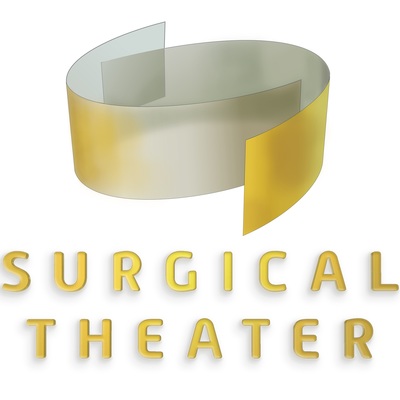Surgical Theater 360XR Visualization Utilized in Successful Separation of Extremely Rare Conjoined Twins in Israel

LOS ANGELES, Sept. 20, 2021 /PRNewswire/ — Surgery itself is very daunting, but a surgery that has only been performed a few times in the world, is unimaginable for any parent. All the questions, all the fears, all the risks, all the possible scenarios that cannot be foreseen. Luckily for the medical staff at Soroka Medical Center, they were powered with the best medical applications to help them mitigate risks associated with such a complex surgery. One of those technologies, developed by Israeli American company, Surgical Theater, played a pivotal role in providing the medical team with tools that went beyond their visual limitations.
It took a team of doctors at Soroka Medical Center in Israel to perform this complex procedure involving twins born fused together at their head. The patients were 1-year-old partially craniopagus twins that had been conjoined at the back of their heads, facing away from one another. Surgical Theater 360° VR models provided advanced insights to analyze critical blood vessels and plan for the end goal of separating the twins in the safest, and most anatomically normal repositioning as possible.
To put this high-risk, intricately complex surgery into perspective, “This is a rare and complex operation performed so far in the world only about 20 times, and for the first time in Israel,” said Dr Mickey Gideon, Director of Neurosurgery at Soroka Medical Center.
During preoperative surgical planning, the team of surgeons were able to review the rendered 360°VR model and found they were able to best visualize the major veins surrounding the surface of each patient’s brain. The superior sagittal sinus, a major vein bringing venous blood from the brain back to the heart, of Patient 2 laid at the exact center of where the twins were fused – a fact that surgeons knew prior to using Surgical Theater’s virtual modeling. What was not known previously, however, were the paths and junction points of the smaller, but still critical veins that lie within this fusion region. With the 360XR model, surgeons were able to intimately analyze and understand the location of a shared vein between the right transverse sinus and the superior sagittal sinus of Patient 1 and 2, respectively. Virtual modeling allowed for increased understanding of the abnormal structure of what appeared to be the right transverse sinus of Patient 2. The surgeons noted that the virtual imaging gave them the ideal tool to visualize the anatomy, something that the 2D traditional CT imaging alone was not able to provide.
“Using Surgical Theater’s VR model, it was possible to simulate the analysis and the anatomy for the operation, and to prepare for it accurately. The system helped us to better understand the surgical field, to examine the anatomical structures and the relationship between them, and to plan the operation in the best possible way, said Dr. Gideon. “During the operation itself, the Surgical Theater system gave us advanced and comprehensive knowledge of the patients’ anatomies through the use of integrated real-time navigation. It made it possible to see the shared blood vessels, visualize the connections between them and carry out the procedure based on our preoperative surgical analysis and simulation of the optimal approach”, Dr. Gideon continued.
When paired with intraoperative neuronavigation, Surgical Theater’s 360° VR model continued to provide surgeons the necessary visualization instrument. From start to finish, integrated navigation gave surgeons the ability to use their increased knowledge of the anatomies. With the virtual mapping — the same virtual craniotomy and incisions from the preoperative planning, simulated dissection paths, and other critical structures were tracked in real-time during the actual operation. Additionally, it allowed them to see and avoid blood vessels.
“Utilization of virtual reality models is the next stage for planning of operations in this current day and age, and even more so for complex surgeries like this”, said Dr. Gideon
Kate Reed, Chief Customer Relations Officer of Surgical Theater, adds, “we are very honored and proud to be able to help in this historical case. Our technology transcends visual limitations by providing surgeons insights they normally would not have. And because of this, we have helped give these two extraordinary twins a chance at a full, independent life. And for the first time, they can now see each other face-to-face”
About Surgical Theater
Surgical Theater, the leader in 360° XR visualization, powers patients and their surgeons with clinical insights by providing them an immersive, inside out view of their patient’s anatomy, enabling them to see the unseen. This is the only end-to-end solution with peer reviewed data that is utilized throughout the patient’s surgical care continuum –from patient engagement, surgical planning, physician interdisciplinary collaboration and into the OR. Supporting more than 15,000 surgeries, 360° XR vertically integrates the institution, medical provider and patient, under a shared goal of improved outcomes. Find out more at www.SurgicalTheater.net and on Facebook at www.facebook.com/SurgicalTheater/, Instagram https://www.instagram.com/surgicaltheater/, LinkedIn https://www.linkedin.com/company/surgical-theater/ and Twitter @SugcialTheater.
![]() View original content to download multimedia:https://www.prnewswire.com/news-releases/surgical-theater-360xr-visualization-utilized-in-successful-separation-of-extremely-rare-conjoined-twins-in-israel-301380306.html
View original content to download multimedia:https://www.prnewswire.com/news-releases/surgical-theater-360xr-visualization-utilized-in-successful-separation-of-extremely-rare-conjoined-twins-in-israel-301380306.html
SOURCE Surgical Theater

